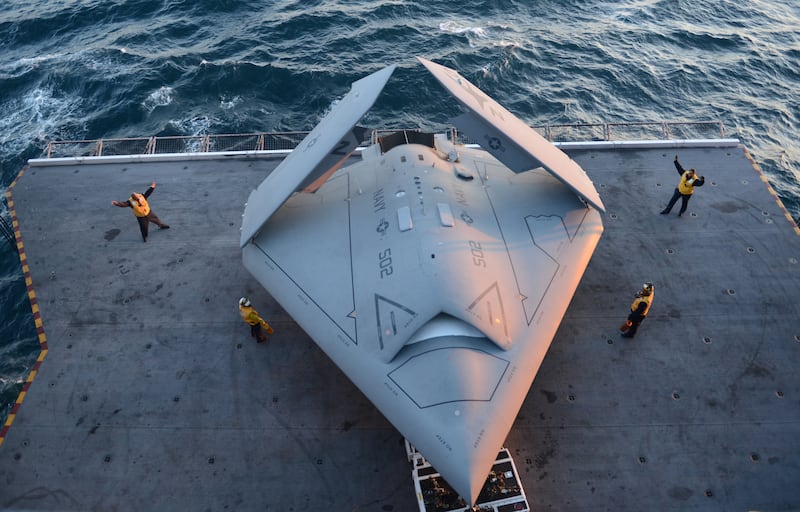Advanced technology has created a shift in the way war is being fought, air force chiefs told a Dubai conference on Sunday.
The military leaders told Dubai's International Air Chiefs’ Conference that artificial intelligence and new weapon systems were increasingly being used in warfare.
UAE Air Force Maj Naser Al Alawi said that the technology helps the way information is retrieved and stored.
“As many of you here today can attest over the past few years there has no doubt been a pronounced surge in the amount of technology,” he said.
“This discussion focusing on the use of AI technology not only has seen growth, but the rate of change continues to be exceptional given the dramatic increase in computing power, storage, memory capacity and use of sophisticated machine learning and AI algorithms.”

Artificial intelligence is revolutionising war strategy with satellite images, drone operations and automated weapons.
Israel, for example, has been using AI to identify Hamas targets in its war against Gaza, according to reports.
Mr Alawi said that it was important for countries to keep track of how fast technology is evolving.
“Many also recognise that the very way in which we fight and win wars will and must change in order to keep pace with these technological evolutions,” he said.
“The inevitable integration of new disruptive technology has added to concern about the possibility that these future technological advances will be weaponised and used by various terrorist and criminal groups.”
New threats emerging
Glen Braz, air commander at the Royal Australian Air Force, said that the democratisation of technology could “erode military advantages and see new threats emerge”.
He said that it would change the way data flow and obtaining intelligence takes place during warfare.
“The democratisation is changing the application of technology. It's also relatively cheap and commercially accessible,” he said.
“In the past decade, we've seen nation states and non-state actors generate significant asymmetric air power by using cheap, commercial off-the-shelf and military uncrewed aerial systems,” he said.
Commander Braz also said that an over reliance on connectivity could create vulnerabilities.
Since Russia invaded Ukraine, several cyber attacks have been carried out on satellites operating over the country, often disconnecting its internet and communication services.
“Both kinetic and non-kinetic attacks seek to deny or degrade connection to paralyse our ability to control the air,” said Commander Braz.
“Our aviators must have the resilience to continue to operate without direct communication to their commander.”
Space is the next frontier for wars
The space domain is also being increasingly used to fight wars, according to Dr Sherrill Lingel, the director of the force modernisation and employment programme in the US Air Force.
“The United States Space Force identifies comprehensive and actionable awareness of the space domain as a core tenant of its theory of success,” she said.
“At the same time, the space domain awareness is increasingly challenged by the launch of new constellations, manoeuvring assets and activities from non-co-operative actors in space.
“The US Space Surveillance Network currently tracks about 10,000 satellites and 34,000 debris objects and maintains these in its catalogue, and that number is growing dramatically from launches, collisions and testing of direct ascent anti-satellite weapons.”
The militarisation of space includes using weapons, carrying out cyber attacks on satellites, using technology that jams communications and possessing a large fleet of intelligence, surveillance and reconnaissance satellites.







